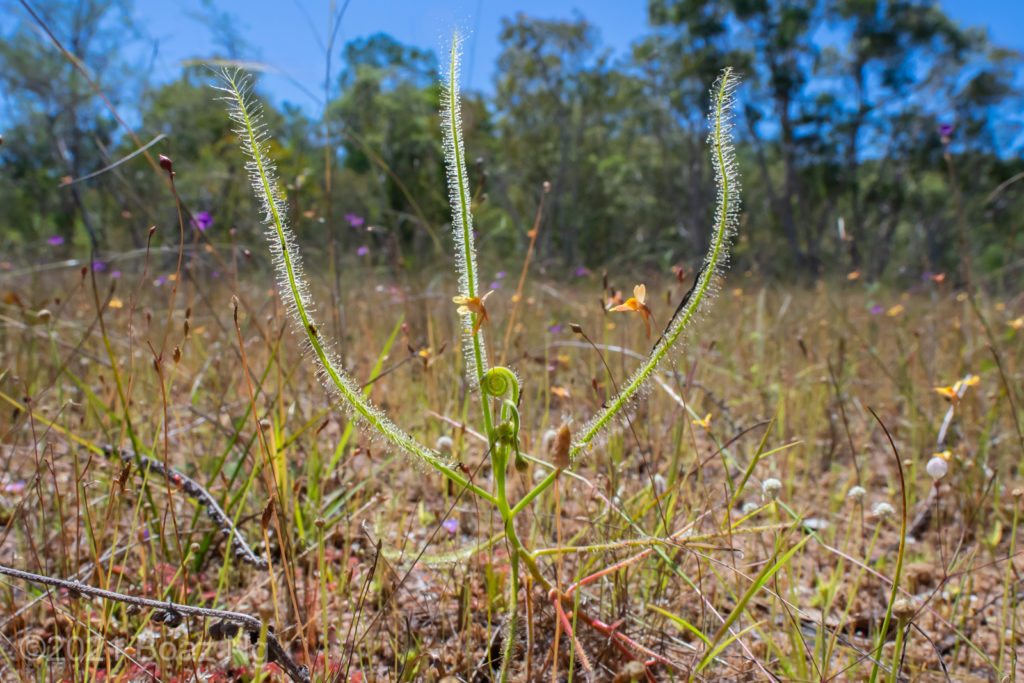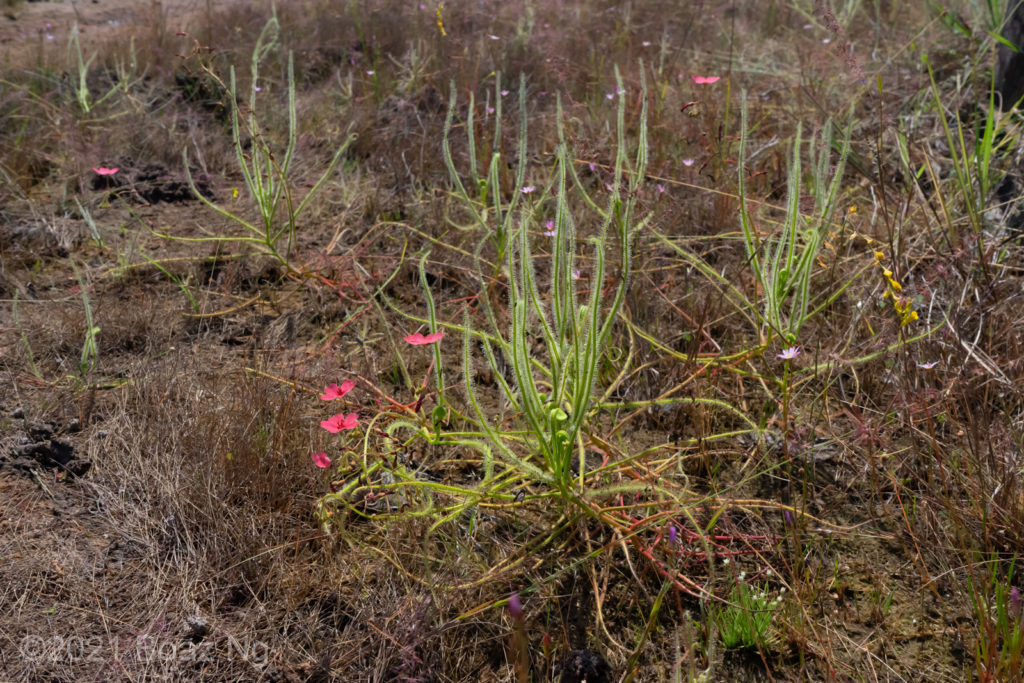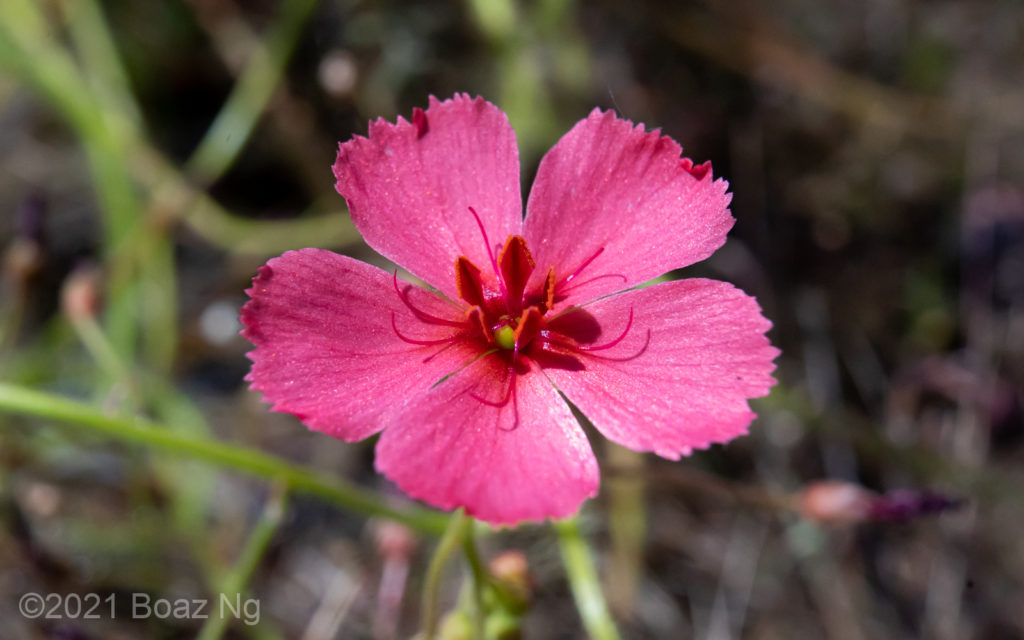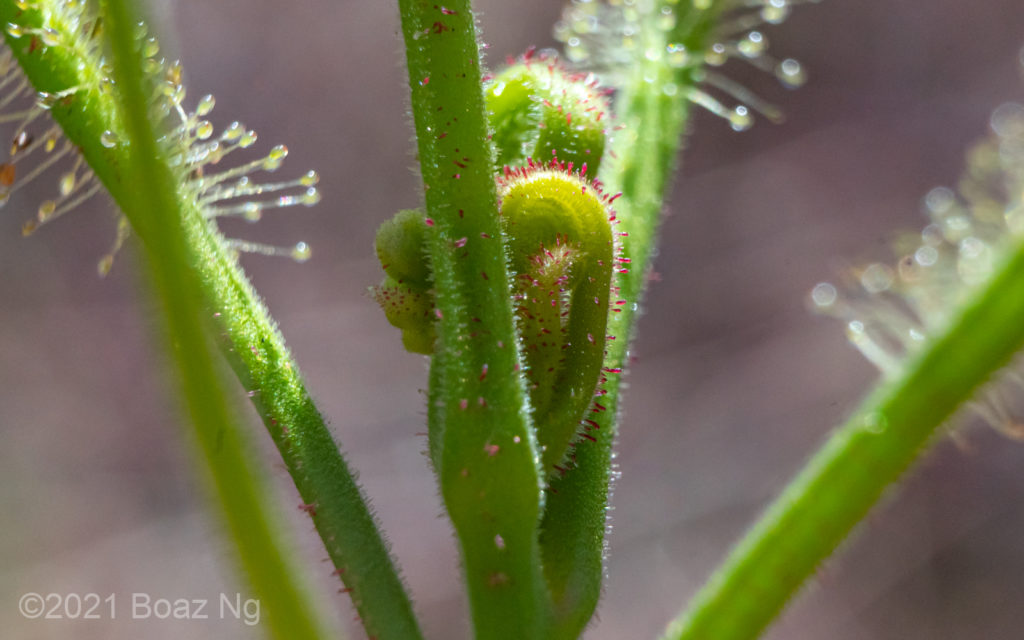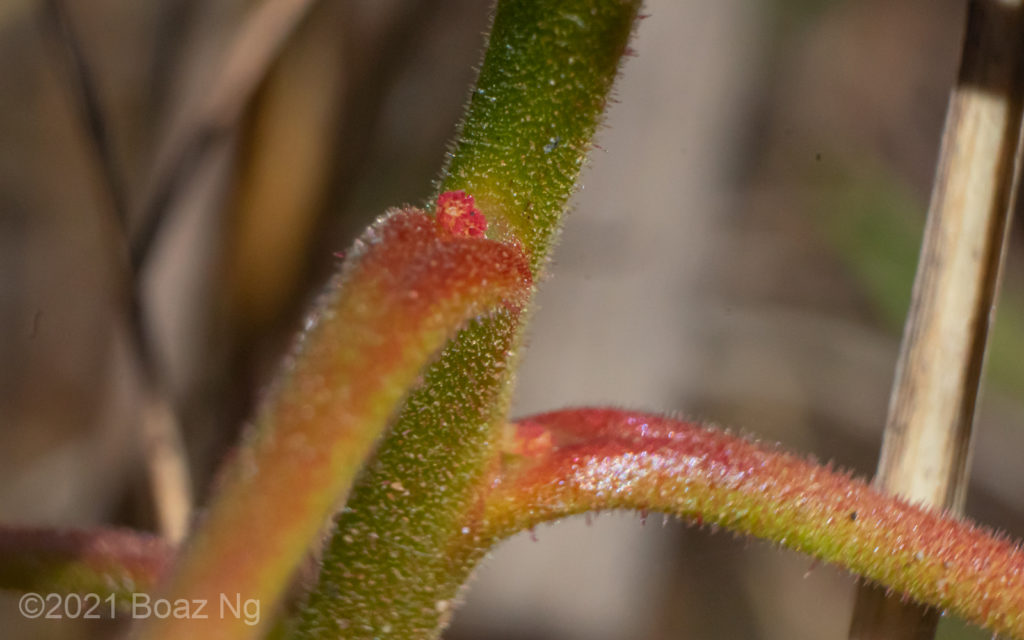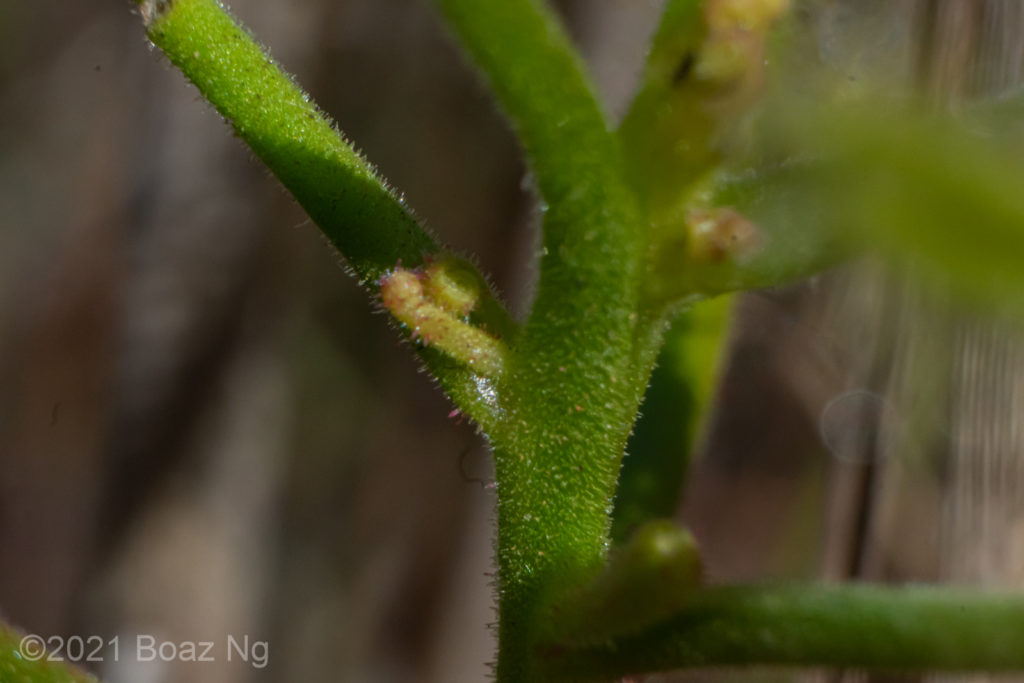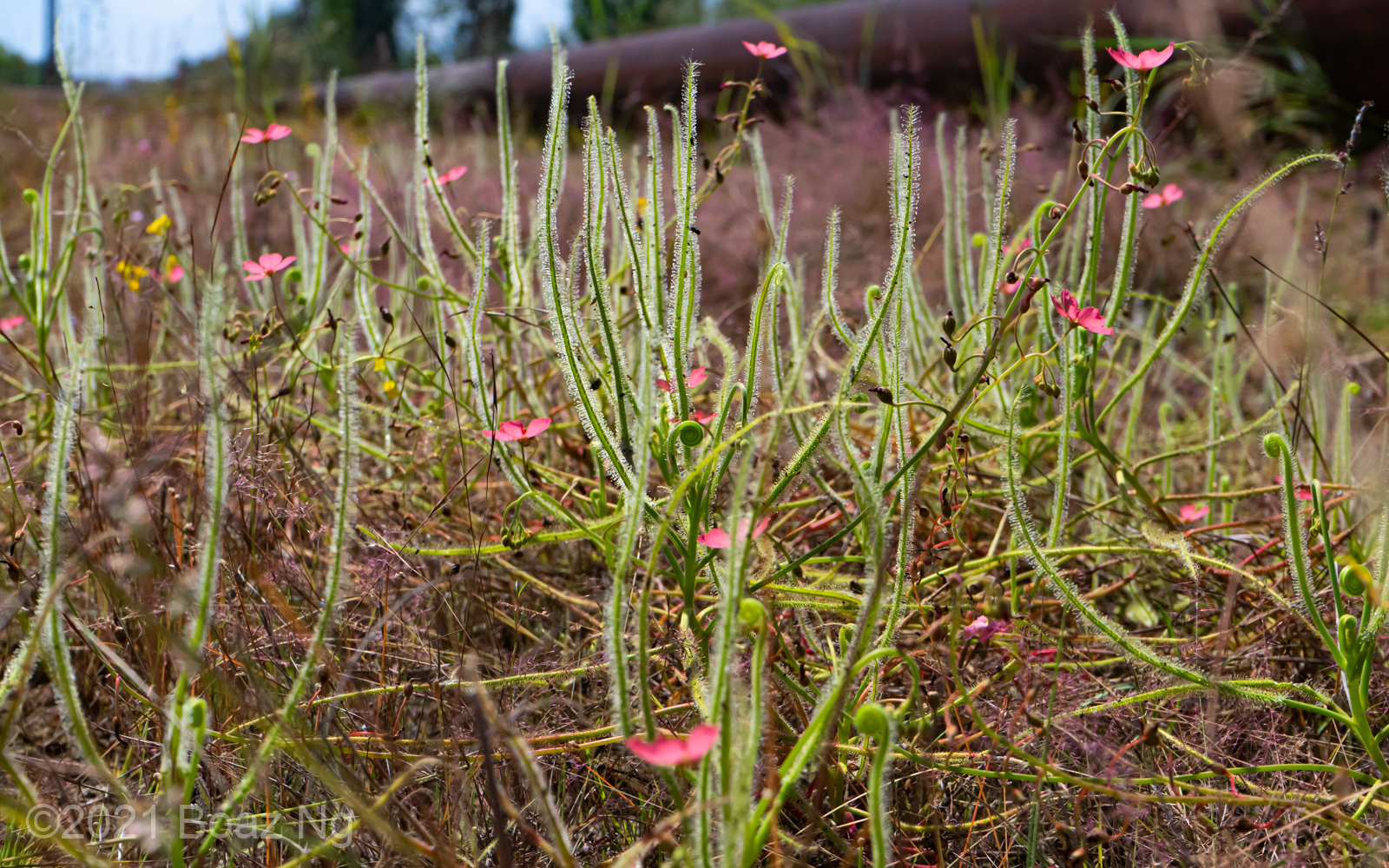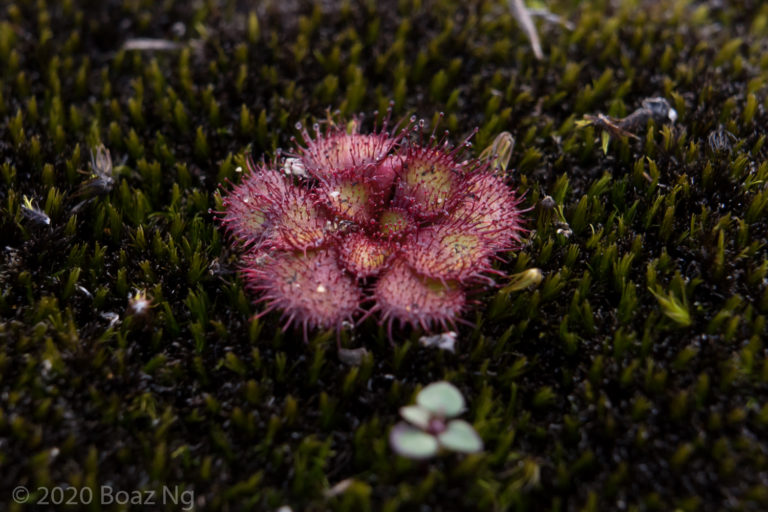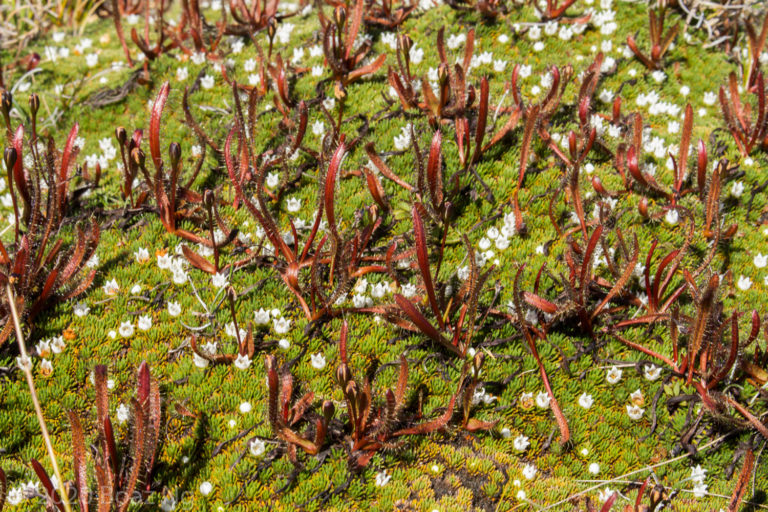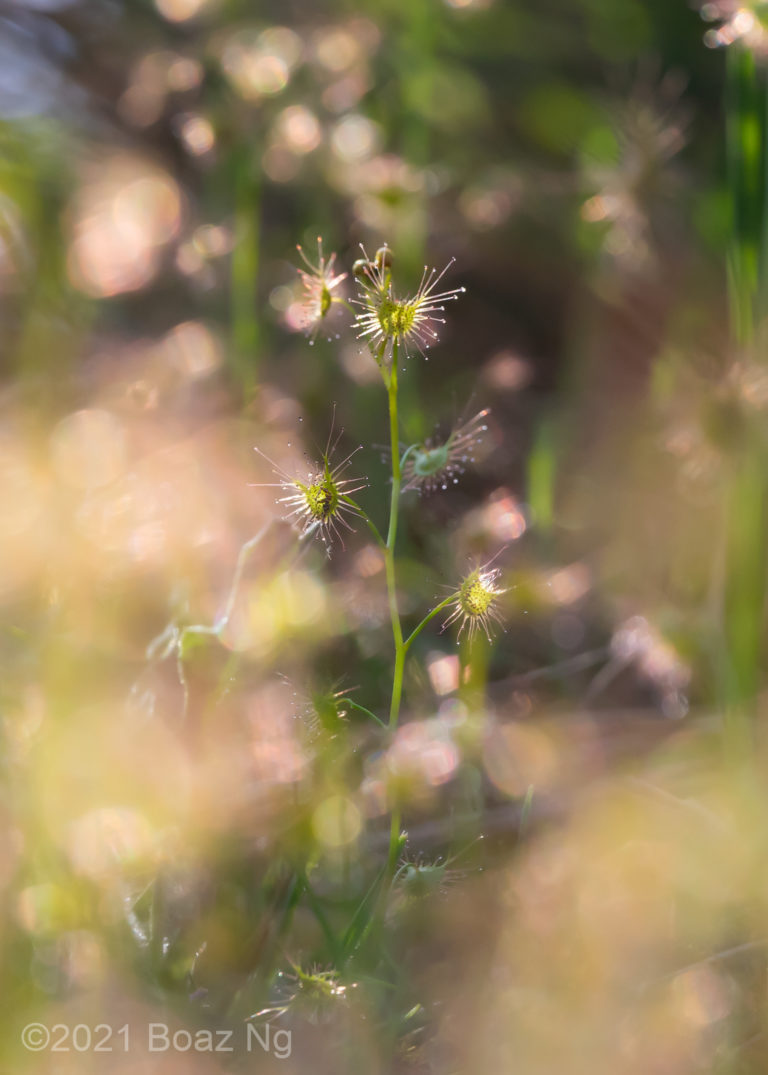Drosera fragrans is a sundew in the section Arachnopus (indica complex) endemic to monsoonal Northern Territory and Western Australia. The species is named for its sweet odour, which is reminiscent of honeydew melon.
D. fragrans is a large plant with bright green foliage. A distinct petiole separates the glandular laminae from the main stem. Large red glands are produced at the undersides of the petioles, which may be responsible for the strong scent the plant emits. In Lowrie’s description, the species produces ‘T’ shaped appendages on the petioles but these structures are absent in the Darwin population. Lowrie also notes ‘bowling pin’ like appendages on the leaf axils, however I only observed them on the oldest specimens. It is likely that these represent budding side branches produced at maturity, some of which never unfurl. The flower of the plant is a stunning metallic cerise (cherry) in colouration.
Drosera fragrans grows in seasonally inundated grasslands, typically in sandy substrates. Amongst the indica complex sundews, Drosera fragrans is identified easily by its large cerise blooms (D. glabriscapa also has similar blooms but is much smaller. The flowerscapes of that species are also glabrous). Outside of flowering, it can be distinguished by its distinct petiole (D. nana and D. aquatica don’t have a noticable petiole) and lack of yellow indumenta on its stem (D. fragrans has yellow mushroom like indumenta on its stems).
